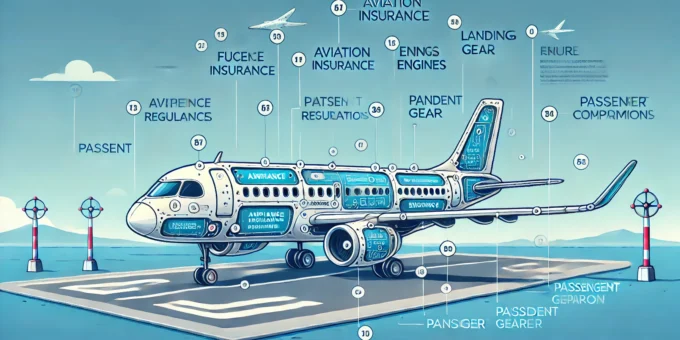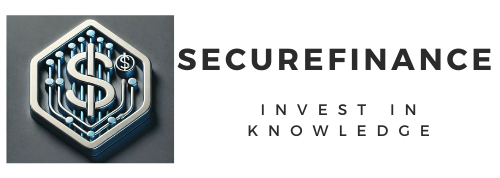
Navigating the complexities of aviation insurance regulations is crucial for anyone involved in the aviation industry, from airlines and private aircraft owners to brokers and insurers. These regulations safeguard stakeholders by ensuring comprehensive coverage and maintaining operational safety standards. In this article, we will explore the intricacies of aviation insurance, its types, and the regulatory frameworks that govern its use worldwide.
What is Aviation Insurance?
Aviation insurance is a specialized policy designed to protect against risks associated with the operation, maintenance, and ownership of aircraft. This includes coverage for damage to the aircraft, liabilities to passengers, cargo, and third parties, as well as risks during ground operations. It acts as a financial shield, ensuring that aviation stakeholders can manage risks effectively while maintaining operational continuity.
Types of Aviation Insurance
Hull Insurance
Hull insurance covers physical damage to the aircraft itself, whether due to an accident, theft, or vandalism. This policy is critical for both private and commercial aircraft owners who want to protect their significant investments.
Liability Insurance
Liability insurance provides coverage for third-party claims, including property damage and injuries caused by the aircraft. This is a legal requirement in many jurisdictions to ensure that victims of accidents receive fair compensation.
Passenger Liability Insurance
Passenger liability coverage protects the airline or aircraft operator from claims made by passengers in the event of injuries or fatalities during a flight. It is a cornerstone of aviation safety and compliance.
Ground Risk Coverage
Ground risk insurance addresses risks that occur while the aircraft is on the ground, such as damage during maintenance, towing, or storage.
Importance of Aviation Insurance
Aviation insurance is more than just a legal formality—it is an essential tool for risk management in an industry where operational safety and financial stability are intertwined. Without adequate coverage, stakeholders face significant financial and reputational risks, potentially leading to legal disputes and operational shutdowns.
Global Aviation Insurance Regulations
The aviation industry operates under a web of international regulations to ensure safety, accountability, and fair practices. The International Civil Aviation Organization (ICAO) sets global standards that member states incorporate into their national frameworks. Additionally, the Montreal Convention governs liability for international air travel, ensuring uniformity in passenger claims.
Regional Aviation Insurance Policies
United States
In the U.S., aviation insurance is regulated by the Federal Aviation Administration (FAA) and the Department of Transportation (DOT). Policies often emphasize liability coverage to protect third-party victims of aviation incidents.
Europe
The European Union mandates specific minimum insurance requirements through EC Regulation 785/2004, covering liability for passengers, cargo, and third parties.
Asia-Pacific
Rapid aviation growth in Asia-Pacific has led to increased regulatory scrutiny. Countries like China and India are introducing stricter compliance measures for both domestic and international carriers.
Africa
In Africa, fragmented regulatory frameworks are evolving to align with global standards, with a focus on improving safety and accessibility in the region.
Compliance Requirements
Meeting aviation insurance compliance standards involves several steps, including acquiring appropriate policies, maintaining documentation, and ensuring licensing requirements are met. Compliance not only ensures legal operation but also boosts confidence among passengers and partners.
Emerging Trends in Aviation Insurance
The aviation insurance industry is evolving to address new risks, including cybersecurity threats, drone operations, and climate-related events. Technological advancements such as blockchain and artificial intelligence are also streamlining claims processing and policy management.
Challenges in Aviation Insurance Regulations
The dynamic nature of the aviation sector often creates regulatory challenges. Stakeholders must navigate complex legal frameworks, adapt to geopolitical changes, and manage rising costs driven by increased claims and environmental factors.
Frequently Asked Questions
What is the role of ICAO in aviation insurance regulations?
ICAO establishes international standards for aviation safety, which include guidelines for insurance coverage to manage risks globally.
Do private aircraft require the same insurance as commercial planes?
No, private aircraft policies are typically less comprehensive and focus on individual risk profiles, unlike the extensive coverage required for commercial operations.
What factors affect aviation insurance premiums?
Premiums are influenced by factors such as aircraft type, operational history, geographic region, and coverage limits.
Is passenger liability insurance mandatory?
Yes, in most countries, passenger liability insurance is mandatory to ensure compensation for passengers in case of an accident.
How do natural disasters impact aviation insurance?
Natural disasters can increase premiums and lead to specific exclusions or adjustments in coverage policies.
What are the penalties for non-compliance with aviation insurance regulations?
Penalties range from fines to suspension of operational licenses, depending on the severity of the non-compliance.
You Can Also Read : How AI is Transforming the Insurance Industry by 2025
Conclusion
Understanding aviation insurance regulations is integral to navigating the aviation industry’s challenges and opportunities. By staying informed about the types of coverage, regulatory frameworks, and emerging trends, stakeholders can ensure operational safety and financial stability. As the industry continues to evolve, the role of robust insurance policies will remain indispensable in safeguarding the future of aviation.
